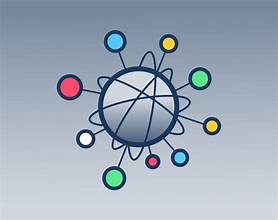Connecting the Dots: Unraveling IoT Standards and Protocols

Introduction
The Internet of Things (IoT) is transforming the way we interact with technology, enabling smart devices to communicate seamlessly. From smart homes and industrial automation to healthcare and agriculture, IoT is revolutionizing various sectors. However, for this interconnected ecosystem to function efficiently, standardized protocols are essential. IoT standards and protocols define how devices exchange data, ensuring security, interoperability, and scalability. In this article, we will unravel the complexities of IoT standards and protocols, exploring their significance, key players, and future developments.
Understanding IoT Standards and Protocols
Before diving into specifics, it’s important to differentiate between standards and protocols. A standard is an agreed-upon framework that dictates how technologies should function, ensuring consistency across devices. Protocols, on the other hand, are the rules and formats that govern data transmission. Both play a critical role in shaping IoT ecosystems, ensuring seamless communication between diverse devices from different manufacturers.
With the exponential growth of IoT devices, numerous standards and protocols have emerged, each catering to specific use cases. From connectivity and data transmission to security and device management, these standards address various aspects of IoT deployment. However, the sheer number of competing standards often leads to confusion and fragmentation within the industry.
Key IoT Communication Protocols
1. MQTT (Message Queuing Telemetry Transport)
MQTT is one of the most widely used messaging protocols for IoT applications. Designed for lightweight communication, MQTT operates on a publish-subscribe model, making it ideal for low-bandwidth and low-power devices. It is commonly used in industrial IoT, smart home systems, and remote monitoring applications.
One of MQTT’s primary advantages is its efficiency in constrained environments. Since IoT devices often operate with limited power and network resources, MQTT minimizes overhead while ensuring reliable message delivery. Security features such as authentication and encryption further enhance its suitability for sensitive applications.
Despite its benefits, MQTT has limitations. It lacks native support for device discovery and management, requiring additional layers for large-scale implementations. However, its simplicity and reliability make it a preferred choice for many IoT deployments.
2. CoAP (Constrained Application Protocol)
CoAP is a lightweight protocol optimized for constrained environments. Based on the HTTP model, it is designed for resource-limited devices that need efficient communication over networks such as LPWAN (Low-Power Wide-Area Network). CoAP follows a request-response architecture, making it suitable for applications like smart agriculture, environmental monitoring, and smart city solutions.
A key feature of CoAP is its ability to function over UDP (User Datagram Protocol), reducing latency and power consumption. It also supports multicast communication, allowing multiple devices to receive the same data simultaneously. However, CoAP lacks built-in security, necessitating additional security layers like DTLS (Datagram Transport Layer Security) for encryption.
While CoAP is an excellent choice for lightweight IoT applications, its adoption remains lower than MQTT due to its complexity in implementation. Nonetheless, it remains a crucial protocol for resource-constrained devices.
3. HTTP and WebSockets
Traditional web protocols like HTTP and WebSockets are also utilized in IoT, particularly for cloud-based applications. HTTP is widely known for its ease of implementation, making it a go-to choice for IoT devices interacting with web services.
WebSockets, on the other hand, provide a real-time, bidirectional communication channel between devices and servers. This makes them ideal for applications requiring instant updates, such as IoT dashboards and real-time analytics platforms. However, HTTP and WebSockets can be resource-intensive, making them less suitable for low-power devices compared to MQTT and CoAP.
Despite their limitations, these protocols remain vital in IoT ecosystems, particularly for applications where cloud connectivity is essential.
Wireless Communication Standards
1. Wi-Fi
Wi-Fi is a dominant communication standard for IoT devices, especially in home automation and industrial environments. Its high-speed data transmission capabilities make it ideal for applications requiring real-time data processing, such as smart cameras and voice assistants.
However, Wi-Fi has significant drawbacks in terms of power consumption, making it less suitable for battery-operated IoT devices. Additionally, network congestion in crowded environments can impact performance. Nonetheless, advancements such as Wi-Fi 6 aim to improve efficiency and reliability for IoT applications.
2. Bluetooth and BLE (Bluetooth Low Energy)
Bluetooth, particularly BLE, is a popular standard for short-range IoT communication. BLE consumes significantly less power than traditional Bluetooth, making it suitable for wearable devices, smart locks, and healthcare applications.
BLE supports mesh networking, enabling multiple devices to communicate within a network without relying on a central hub. This feature enhances scalability and reliability, particularly for smart home and industrial IoT solutions. However, BLE’s limited range compared to Wi-Fi and cellular networks can be a constraint for certain use cases.
3. Zigbee and Z-Wave
Zigbee and Z-Wave are two widely adopted mesh networking protocols for smart home and industrial automation. Both offer low-power, low-latency communication, making them ideal for smart lighting, security systems, and energy management solutions.
Zigbee operates on the IEEE 802.15.4 standard, providing a robust and scalable network for IoT devices. Z-Wave, on the other hand, uses sub-GHz frequencies, offering better range and reduced interference. While both protocols excel in home automation, interoperability issues between different manufacturers remain a challenge.
Security and Interoperability Challenges
Security remains a major concern in IoT, as connected devices are vulnerable to cyber threats. Standardized security protocols such as TLS (Transport Layer Security) and DTLS help protect data in transit. However, ensuring end-to-end security across diverse IoT ecosystems requires a multi-layered approach, including device authentication, encryption, and regular firmware updates.
Interoperability is another significant challenge, as the IoT landscape consists of multiple vendors using different standards. Initiatives such as Matter (formerly Project CHIP) aim to create a unified framework for IoT interoperability, ensuring seamless communication between devices from different manufacturers.
Future of IoT Standards and Protocols
As IoT continues to evolve, the need for standardized protocols will become even more critical. Emerging technologies such as 5G, edge computing, and AI-driven automation will shape the next generation of IoT standards. Industry collaborations and regulatory frameworks will play a pivotal role in addressing fragmentation and enhancing security.
Additionally, the push for open-source IoT protocols is gaining traction, fostering innovation and accessibility. Organizations such as the Internet Engineering Task Force (IETF) and the Industrial Internet Consortium (IIC) are actively working towards developing robust and scalable IoT standards.
Conclusion
The world of IoT standards and protocols is vast and complex, but understanding their role is essential for building efficient and secure connected ecosystems. From communication protocols like MQTT and CoAP to wireless standards like Wi-Fi and Zigbee, each plays a crucial role in enabling seamless device interactions. While challenges such as security and interoperability persist, ongoing advancements and industry collaborations continue to shape a more unified IoT landscape.
By connecting the dots between different standards and protocols, businesses and developers can harness the full potential of IoT, driving innovation and efficiency across various domains. As the IoT ecosystem matures, staying informed about emerging standards will be key to ensuring a future-proof and scalable approach to connectivity.



